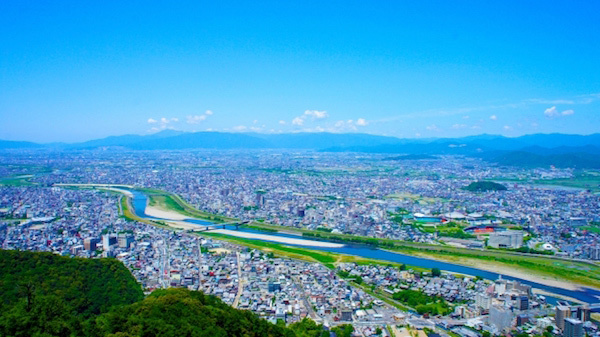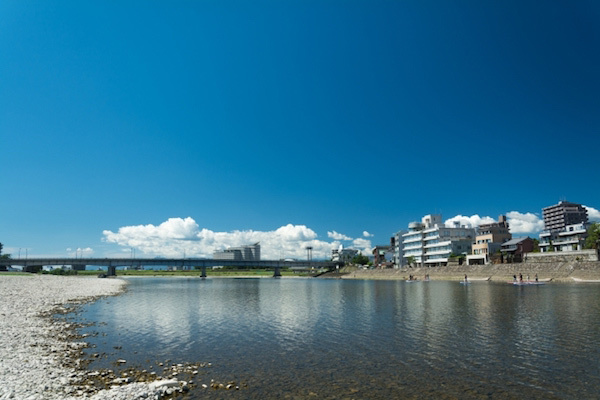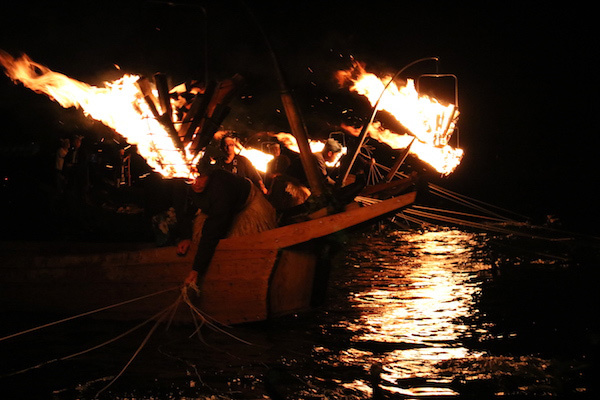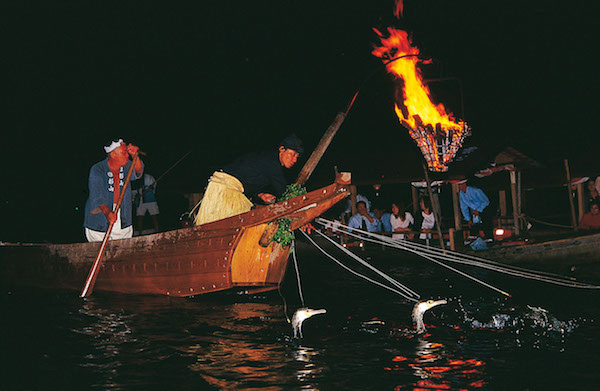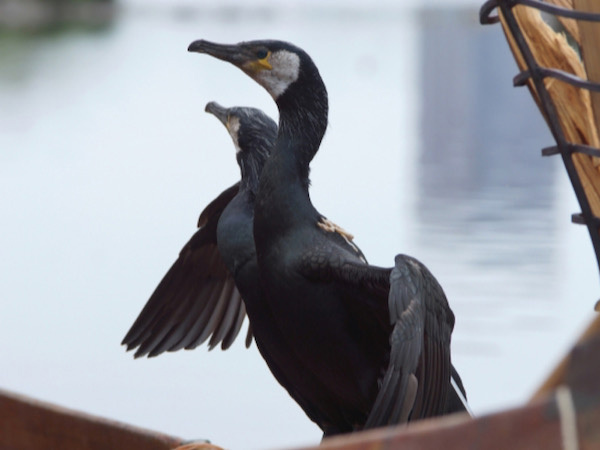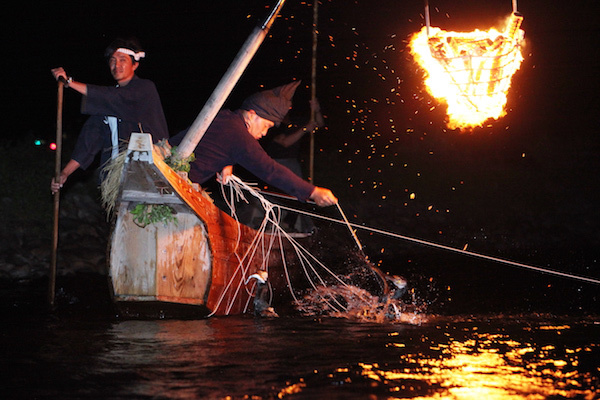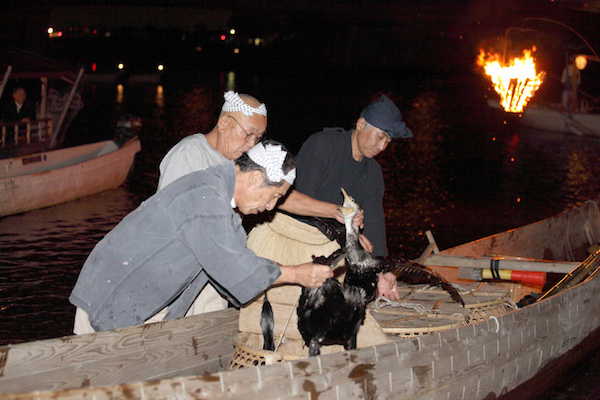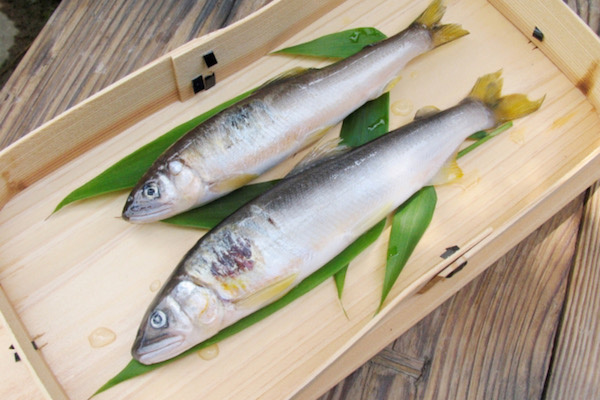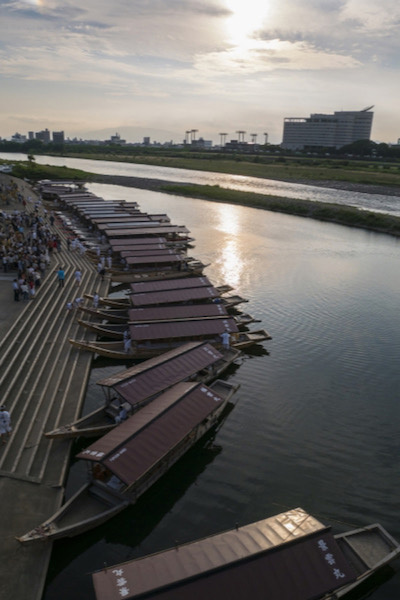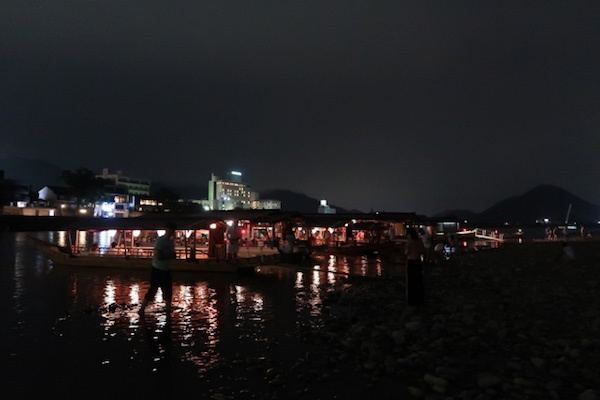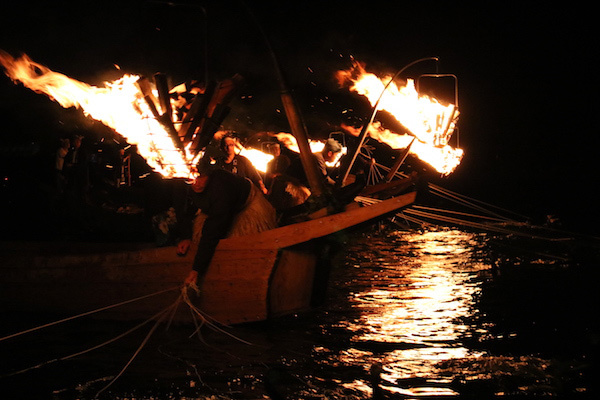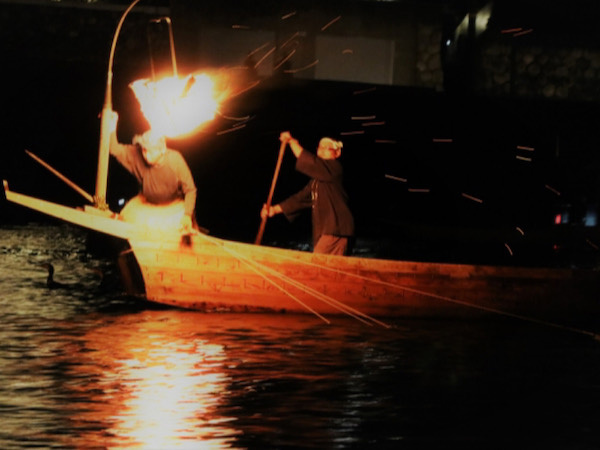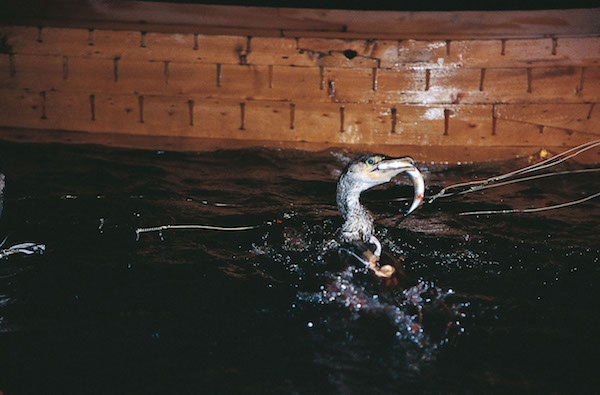Cormorant fishing on the Nagara River that has been passed down for over 1300 years
The Nagara River is one of the “three major clean streams in Japan”
that flows from Mt. Dainichigatake in Gujo City, Gifu Prefecture to Ise Bay in Mie Prefecture.
Cormorant fishing is the traditional fishing method used in the Nagara River.
In Gifu City, Gifu Prefecture, which is just in the middle of the river, cormorant fishing is held every year from May 11th to October 15th.
Cormorant fishermen on a boat wind a rope around the cormorant’s neck and release the cormorant into the river.
Then, they capture the fish that the cormorant caught in the water.
This fishing method is cormorant fishing, and you can be seen it from the spectator boat.
Cooperation with cormorants and humans, the sound of hitting the gunwale with oars, the encouragement from the fisherman to cormorants,
and the appearance of the fire reflected on the surface of the water seems to have time slipped in the past.
Every year, about 100,000 tourists visit the Nagara River to see this scene.
From abroad, it seems that Edward Ⅷ of England has seen cormorant fishing in the past, and now cormorant fishing is known all over the world.
History and beginning of the cormorant fishing in Nagara River
How does cormorant fishing catch fish?
First, the bird used for cormorant fishing is
Japanese cormorant (Phalacrocorax capillatus).
This is because the body is bigger, stronger, and patient than the great cormorant (Phalacrocorax carbo).
Cormorants have ropes around their necks that prevent them from swallowing fish caught in the river.
The fisherman then catches the fish that the cormorant spits out.
Fish lose consciousness when they caught by cormorants. Therefore, the fish remain fresh after being caught.
This means that they can catch fresher fish than using a fishing rod or net.
This seems simple, but the strength and the way of tying the string around the cormorant’s neck are important and require skill and experience.
The cormorants which have gained experience seem to be familiar with where in the river the fish are.
The fisherman supports the cormorant while watching the movement of the string tied around the cormorant’s neck and the condition of the river.
Humans and cormorants form the best teamwork to catch fish.
Sweetfish is the main fish caught by cormorant fishing.
Sweetfish caught by cormorant is very valuable and almost never goes to the market but is sold to local restaurants and inns.
The time when cormorant fishing started in Japan dates back to the Kofun period (from the middle of the 3rd century to the end of the 7th century),
and is recorded in the “Kojiki” and “Nihonshoki” (important Japanese ancient books).
Cormorant fishing has loved by historical figures
For example, Gifu is famous for Nobunaga Oda.
There is a record that he also used cormorant fishing to entertain guests.
Tokugawa Ieyasu also liked cormorant fishing when he visited Gifu after the summer campaign of the siege of Osaka (1615).
It is said that Gifu’s famous Sweetfish sushi came to be offered to the shogunate.
What should you do to see such cormorant fishing?
I will teach you how to experience it.
Let’s reserve a spectator boat!
There are shared boats and charter boats, which operate daily from May 11th to October 15th during the festival period,
except during the cormorant holiday and when the river is flooded.
All boats are operated by the Cormorant Fishing Spectator Boat Office in Gifu City.
You can reserve it by phone or homepage.
The shared boat capacity is about 20 to 30 people.
You can choose the departure time from 18:15, 18:45, 19:15.
If you want to eat dinner in the boat, I recommend that you board a boat that departs 18:15 or 18:45.
I’m sorry to say you can’t eat the fish caught at the time on the boat,
but you can arrange a lunch box at a local restaurant and bring it to the spectator boats.
Bringing lunchbox is free.
For the limited number of days, the spectator boat office also has a set of the lunchbox, drink, and boarding fees, so please inquire.
In addition, if you are staying in the surrounding area, some hotels can arrange meals and a set of boats.
The charter boat is available for 15 to 50 people and the fee changes depending on the number of people.
Departure time is after 17:30 and reservation is phone only.
Cormorant fishing is held from 19:45 to 20:30.
By the way, in addition to the usual cormorant fishing,
a special cormorant fishing for catching sweetfish for the imperial family is also held 8 times during the season.
On that day, the general cormorant fishing starts later than usual.
Departure time is 18:45, 19:15, and 19:45.
Fishing is held 20:30 to 21:30.
There are special cormorant fishing days where fishing is held twice a day on Saturdays from July to September.
This is a fishing for catching sweetfish for the imperial family, but the general public can also see it.
The first shared boats' departure time is 18:15, 18:45, and 19:15. Fishing is held 19:30 to 20:20.
The second shared boat departure time is 20:40 and fishing time is 21:10 to 22:00.
How to enjoy cormorant fishing enough?
You can see the cormorant fishing from the riverbank, but it is not very powerful because you cannot see it up close.
I strongly recommend seeing from the spectator boat.
The spectator boat has a roof, so you don’t worry even on a rainy day.
In addition, some spectator boats are available for the wheelchair users.
Departing from the boarding place and watching the scenery of Nagara River and Mt. Kinka, the boat will anchor at the shore.
You can have a meal or go off the boat and explore the shore until the fishing starts.
Fishing will start when the fireworks for the start signal rise.
First, it begins with hunting down.
The spectator boat goes down the river alongside one of the six cormorant boat.
Then, only the spectator boat will be moored to watch the six boats fishing down the river.
It’s fun to watch the fishermen’s quick rope operations and watch the cormorants catch the fish.
Once the cormorants have caught the fish, the fisherman timed them to raise the cormorant on the boat and spit it out.
And they are very busy to repeat returning the cormorants to the river.
At the end, the cormorant boats spread across the river and descend all at once for fishing.
Sweetfish escapes toward the river, so the cormorant boats fish down the river.
All the cormorant boats line up side by side, and fishermen slap the gunwale to threaten the fish and call out to encourage the cormorants.
The appearance of a flame on the surface of the river is emotional.
Powerful traditional fishing is worth seeing.
By the way, it is very crowded from July to August, so I recommend June and September.
At this time of the year, the climate is so cool and you can see the cormorant fishing comfortably.
If you go in May or October, it’s cold above the river, so it’s best to wear warm clothes.
 JAPAN Travel Concierge
JAPAN Travel Concierge